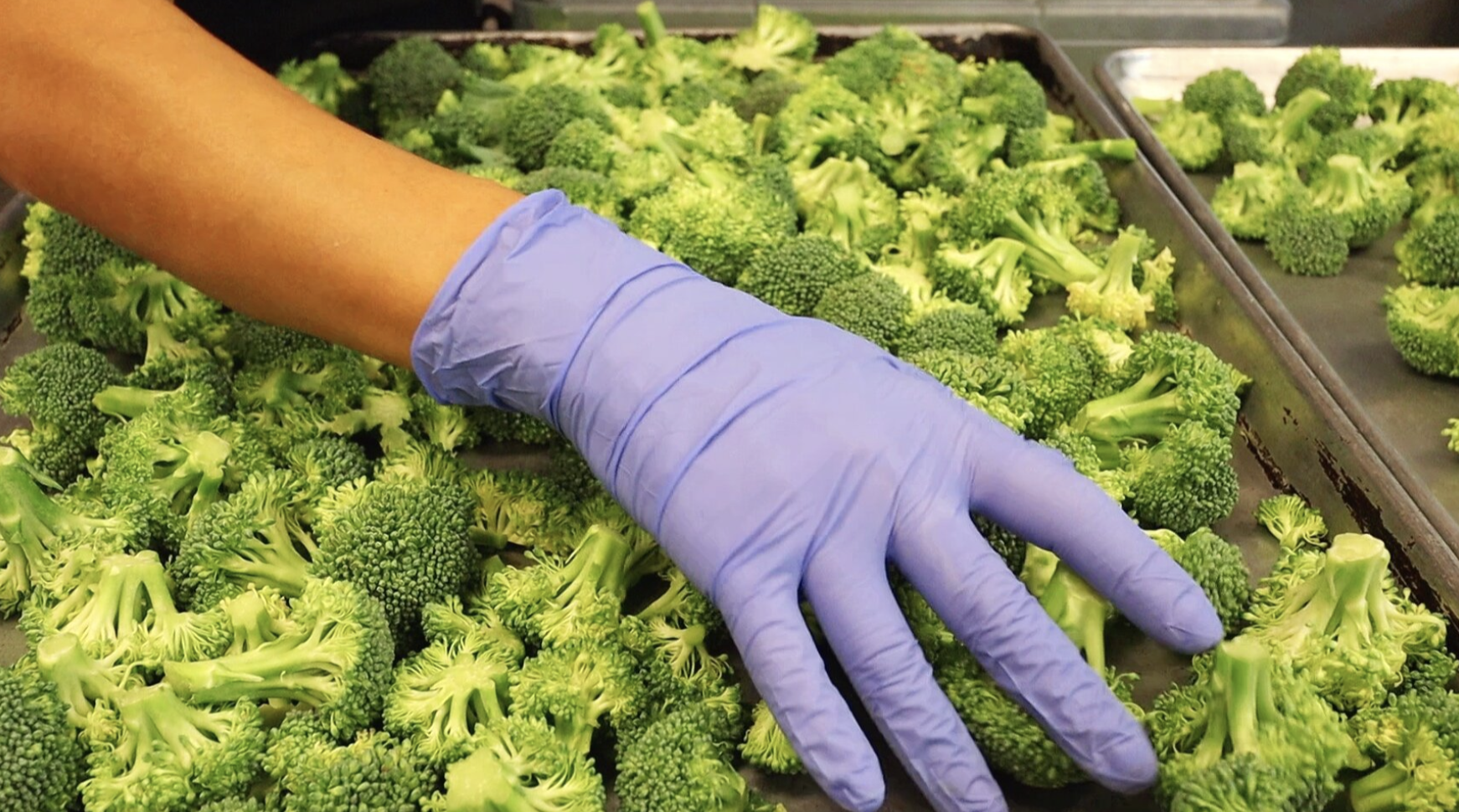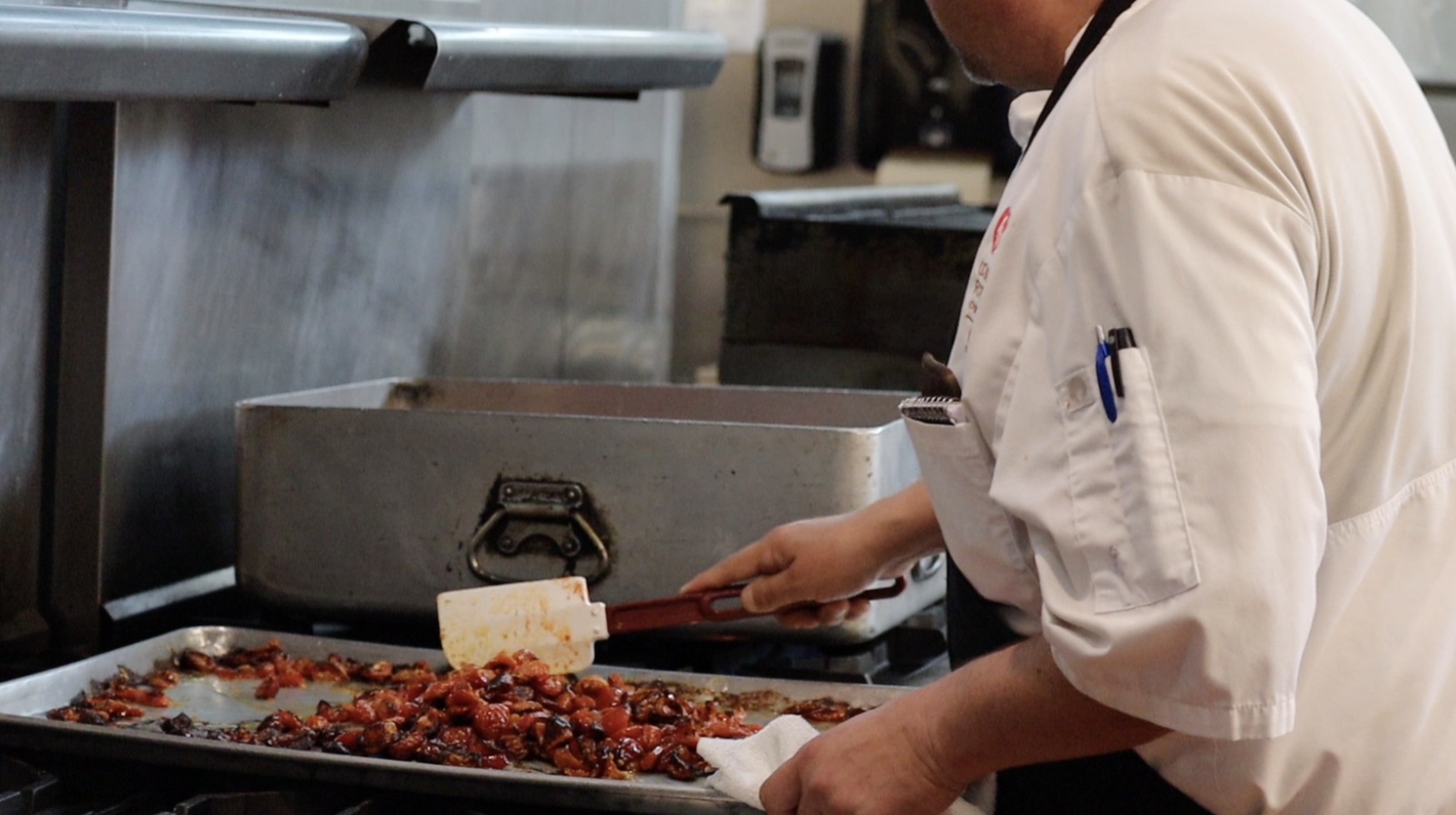Free meals for our community
During the pandemic, our nation’s unemployment rate has risen to a historic level, but government relief checks to individuals and small businesses are being unevenly distributed. More people in our community than ever before find themselves in need of food assistance. For many, asking for that help can be difficult. The Caridad Community Kitchen was already part of a system for preparing and distributing free meals, while also paying special attention to the safety and dignity of those they serve.
Before the COVID-19 pandemic, Caridad Community Kitchen was serving hot meals in addition to grab&go lunches. Now the program has almost doubled its production in size but prepares mostly sandwiches.
DR. BOB ENGLAND: 22 million Americans newly out of work since the middle of March, nearly 350,000 jobless claims here in Arizona and that’s just people who have filed. I don’t know Pima County numbers, our share should be about 50,000 or so of those newly unemployed friends and neighbors.
This is Dr. Bob England, Pima County Health Director. In a daily briefing on April 17th, he announced the creation of a hotline that provides information about help available in our community, including food assistance.
One service offering immediate help is the Caridad Community Kitchen, a program of the Community Food Bank of Southern Arizona. Its purpose is to provide meals for everyone who needs them, no questions asked. Here is Megan Black, a Community Food Bank manager who oversees the program.
MEGAN BLACK: It’s open to anyone in the community who needs meals. It's a really low barrier, no IDs are required, no pre-registration is required. We serve a few days a week at our kitchen but we primarily prepare meals here and send them out to other partner sites to distribute on our behalf in different parts of town.
There are seven sites around Tucson. Before the COVID-19 pandemic, some of these offered hot meals, but now the Kitchen is only making sandwiches available, as “grab and go meals”.
MEGAN BLACK: We’ve seen quite an increase in people, about double the number of people that usually come to get meals but it really depends on the site and part of town that people are in.
In the past, the program provided 1,500 meals every day. Now, they are producing an average of 2,500.
MEGAN BLACK: We’ve transitioned all our community meal sites to grab and go sites, so people are still able to have access to, but they are not congregating together in one place: you get your meal and then you leave.
Black says Each person that visits the meal site receives two sandwiches, two pieces of fruit or fruit cups, bottled water, and a bonus snack if they are available.
MEGAN BLACK: We’ve also made quite a few adjustments to our meal production and distribution to allow for a lot of distance between people when they are working, increased sanitation.
Our sanitation-hygiene practices were already very very good. We are taking extra steps to keep everybody safe. We are regularly sanitizing all handles of our doors throughout the facility, walk-in coolers, areas people are touching a lot.
And again our sanitation is pretty high. And so it’s really just been pivoting and adjusting every day based on best practices for keeping people safe and continuing to serve people.
But asking for help, especially for the first time, can be difficult. In an interview before the pandemic, Megan Black discussed the steps the program implements to break the stigma.
MEGAN BLACK: Our goal is to really provide the most dignified experience possible when people come to get meals from us, provide a safe and positive setting where people can come and get a meal.
Another part of that dignity of service is providing meals that meet people’s nutritional needs, other dietary needs, including cultural preferences, just things that they liked to eat, so it’s really a positive experience for them.
Caridad Community Kitchen produces around 2,500 meals every day for our community.
Another group served by Caridad Community Kitchen are senior citizens. That program is called Meals on Wheels.
MEGAN BLACK: The Meals on Wheels program is in partnership with the Catholic Community Services and Pima Council on Aging and Lutheran Social Services. And we prepare meals for seniors in their program, both seniors in community centers and seniors who are unable to leave their homes and get home-delivered meals.
During the pandemic, the program is still delivering around 2,000 meals every day to seniors in our community.
MEGAN BLACK: We are continuing to provide meals for that program. And just putting plans in place to ensure people have all the food that they need. So we’ve made our menus easy to prepare, so we can make sure that we have time to get it all done and that we are finding balance for staff as well but we are continuing to have a high level of sanitation and still fulfilling all of our partnerships there.
Like many nonprofits, Caridad Community Kitchen used to rely on volunteers, however, during the pandemic the program has asked many of them to stay home and limited the number of people working in the kitchen at one time.
MEGAN BLACK: We had a lot of community members interested in helping Food Bank which is wonderful, and we had been directing them to our Country Club site because they had a really high need for people to pack food boxes, so right now we are not actively recruiting additional volunteers.
What we’ve done is adjust our staffing schedule, so that our staff that is usually in the front or doing other activities are directed to the kitchen, and filling our volunteer slots with people who had already volunteered at the kitchen, so they are already familiar with our sanitation-hygiene practices and we have also been engaging other food bank staff to work in the kitchen as well.
The pandemic has also affected the supply chain: the community kitchen was not able to rely on donations from grocery stores. So the program is on an active search for new partnerships while focusing on buying food, and sourcing from government supplies.
MEGAN BLACK: It’s not the typical grocery store donations that we are using because obviously, they have a very high demand right now so we are focused on either purchasing the food or getting those government commodities available to us.
Black says that the best way to support the Community Food Bank of Southern Arizona is to give money.
MEGAN BLACK: Honestly, the most helpful thing is to make a financial donation online but then the second most helpful thing if they are healthy and able to volunteer they can visit us online and check the drop-in volunteer opportunities to see where they can support.
And, she stresses that those who need help should not be shy to ask for it.
MEGAN BLACK: People who have maybe not participated in our program so far find themselves in a situation when they need to, they are welcome to reach out to us and we are here to help everyone.
To find distribution sites for community meals, and emergency food boxes, visit community-food-bank.org/Get-Help.

